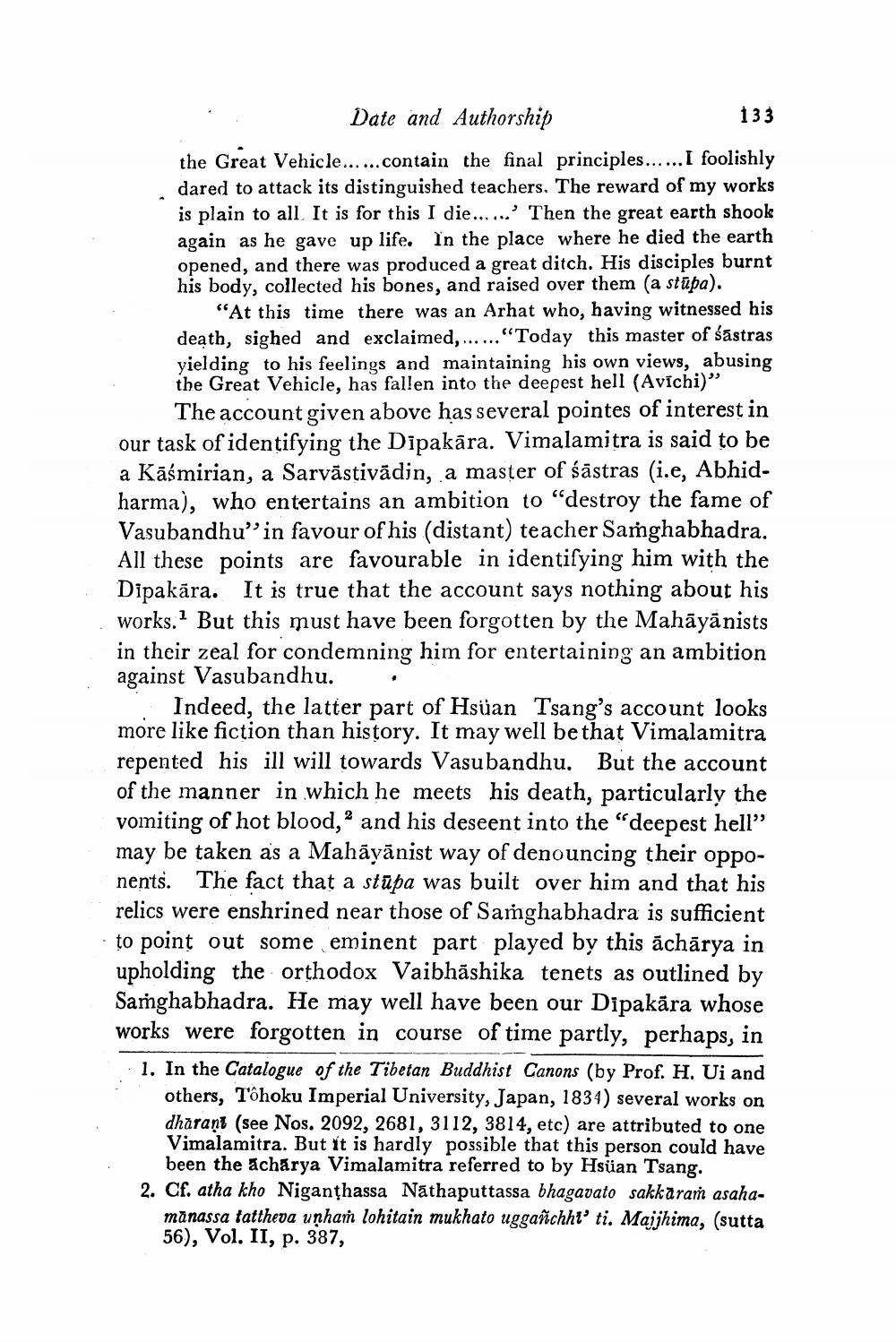________________ Date and Authorship 133 the Great Vehicle...... contain the final principles... ... I foolishly dared to attack its distinguished teachers. The reward of my works is plain to all. It is for this I die... ...' Then the great earth shook again as he gave up life. In the place where he died the earth opened, and there was produced a great ditch. His disciples burnt his body, collected his bones, and raised over them (a stupa). "At this time there was an Arhat who, having witnessed his death, sighed and exclaimed, ......"Today this master of sastras yielding to his feelings and maintaining his own views, abusing the Great Vehicle, has fallen into the deepest hell (Avschi)" The account given above has several pointes of interest in our task of identifying the Dipakara. Vimalamitra is said to be a Kasmirian, a Sarvastivadin, a master of sastras (i.e, Abhidharma), who entertains an ambition to "destroy the fame of Vasubandhu"in favour of his (distant) teacher Samghabhadra. All these points are favourable in identifying him with the Dipakara. It is true that the account says nothing about his works. But this must have been forgotten by the Mahayanists in their zeal for condemning him for entertaining an ambition against Vasubandhu. Indeed, the latter part of Hsuan Tsang's account looks more like fiction than history. It may well bethat Vimalamitra repented his ill will towards Vasubandhu. But the account of the manner in which he meets his death, particularly the vomiting of hot blood, and his deseent into the "deepest hell" may be taken as a Mahayanist way of denouncing their opponents. The fact that a stupa was built over him and that his relics were enshrined near those of Samghabhadra is sufficient to point out some eminent part played by this acharya in upholding the orthodox Vaibhashika tenets as outlined by Samghabhadra. He may well have been our Dipakara whose works were forgotten in course of time partly, perhaps, in 1. In the Catalogue of the Tibetan Buddhist Canons (by Prof. H. Ui and others, Tohoku Imperial University, Japan, 1834) several works on dharant (see Nos. 2092, 2681, 3112, 3814, etc) are attributed to one Vimalamitra. But it is hardly possible that this person could have been the acharya Vimalamitra referred to by Hsuan Tsang. 2. Cf, atha kho Niganthassa Nathaputtassa bhagavato sakkaram asaha manassa tattheva unham lohitain mukhato ugganchht' ti. Majjhima, (sutta 56), Vol. II, p. 387,




